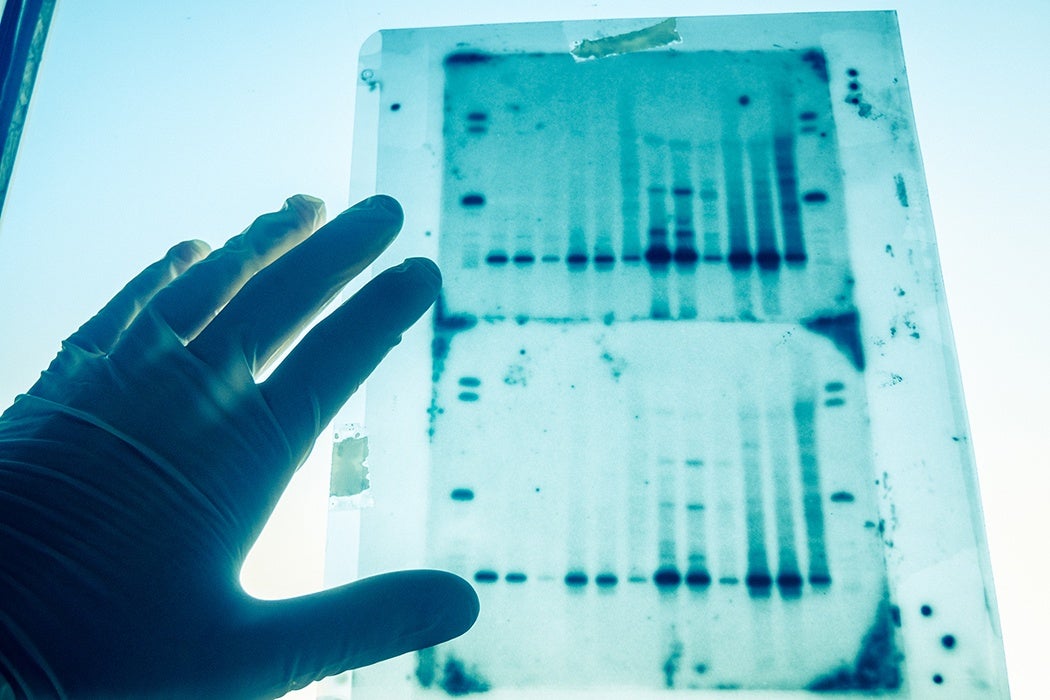It was a high-profile crime in New York City—a jogger was murdered while running in a local park, and detectives had few leads. As the months passed and the crime remained unsolved, the victim’s family began pushing for wider use of familial DNA, or searching DNA databases for partial matches to DNA evidence that might represent a family member of the killer (the technique has been successfully used). Detectives eventually identified a suspect without it, but the idea of familial DNA testing is not going away.
But how does it work? After amplification and controls against contamination, linking a DNA sample to an individual depends on Short Tandem Repeats, or STRs. STRs are very short segments of DNA, only a few base pairs long ( base pairs are pairs of nucleotides making up each strand of the double stranded DNA molecule; there are 3 billion base pairs on the human genome). The number of times each STR repeats at a given loci (location on the genome) is highly variable between people. To ensure that STRs match a particular individual, the U.S. standard is to examine the STRs at 13 different loci plus a sex-linked gene called amelogenin. Since each individual’s genome consists of a set of DNA from each of their parents, it is really 26 different STR loci being compared (13 times on different chromosomes). The probability of all 26 loci matching is as low as 1 in a trillion.
Only a complete match can lead to a conviction, but since we share 50% of our DNA with siblings and parents, and lesser amounts with cousins and other families members, a partial match might indicate a family member. How close a match is required to indicate a family member versus a match that occurs by chance? It depends on how rare the matching alleles are. If particularly rare variant is present, as few as 5/26 matching alleles may be sufficient; when only common alleles are present 15/26 matches are required to establish a family relationship. Investigators need to obtain DNA from specific family members to establish a direct match with a crime scene sample.
DNA is collected and archived all over the country. Many states only keep samples from those who are convicted, but some states keep samples simply upon arrest, or even from witnesses and other voluntary submissions. The databases contain millions of people, and familial searches extend the potential privacy consequences to millions more, most of whom are unconnected to a crime. Expanding the use of these tools also threatens to further ensnare groups that are already over-represented in the criminal justice system. Each state has its own policy about familial DNA searches, and there are no national familial searches, which causes some confusion. The trick is to balance these concerns against the benefit to society of identifying dangerous criminals.







